Complete Solutions to Thermodynamic Process of chapter THERMODYNAMICS of Class 11 book with complete answers and questions
| Class 11 | PHYSICS |
| Chapter | THERMODYNAMICS |
| NCERT FINGERTIPS | Thermodynamic Process |
| Number Of Questions | 52 |
| Academic Year | 2023-24 |
Which of the following process is correct for given P-V diagram.
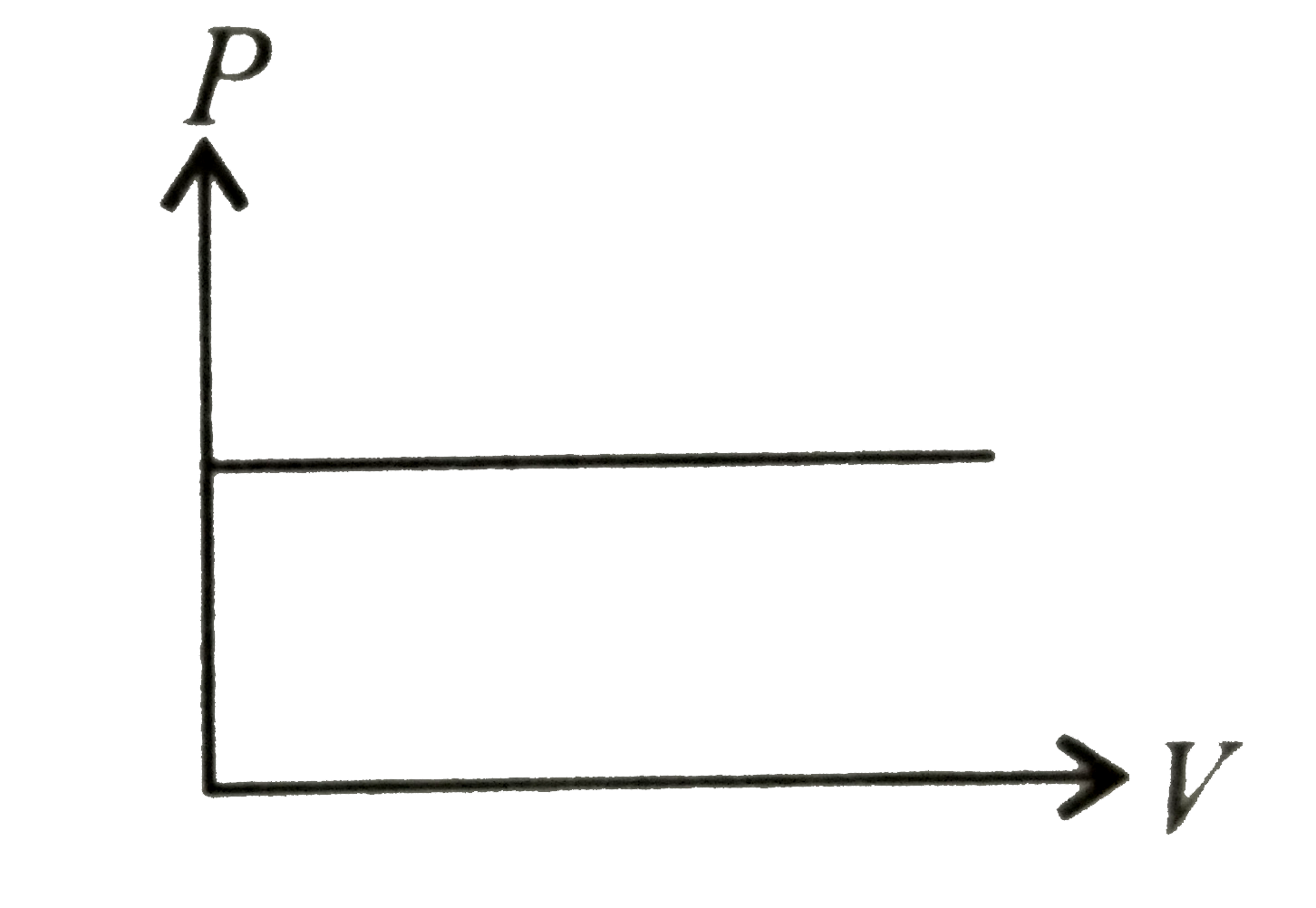 02:10View Solution
02:10View SolutionMatch the column I with columnII
 View Solution
View SolutionThe given P-V diagram expansion of a gs which one of the following statement is true?
 04:19View Solution
04:19View SolutionThe possibility of increase in the temperature of gas without adding heat to it happens in
03:51View SolutionThe ideal gas equation for an adiabatic process is
01:22View SolutionAn ideal gas undergoes isothermal process from some initial state `i` to final state `f`. Choose the correct alternatives.
01:02View SolutionThe isothermal diagram of a gas at three different temperatures `T_(1),T_(2) and ^_(3)`, is show in the given figure .Then
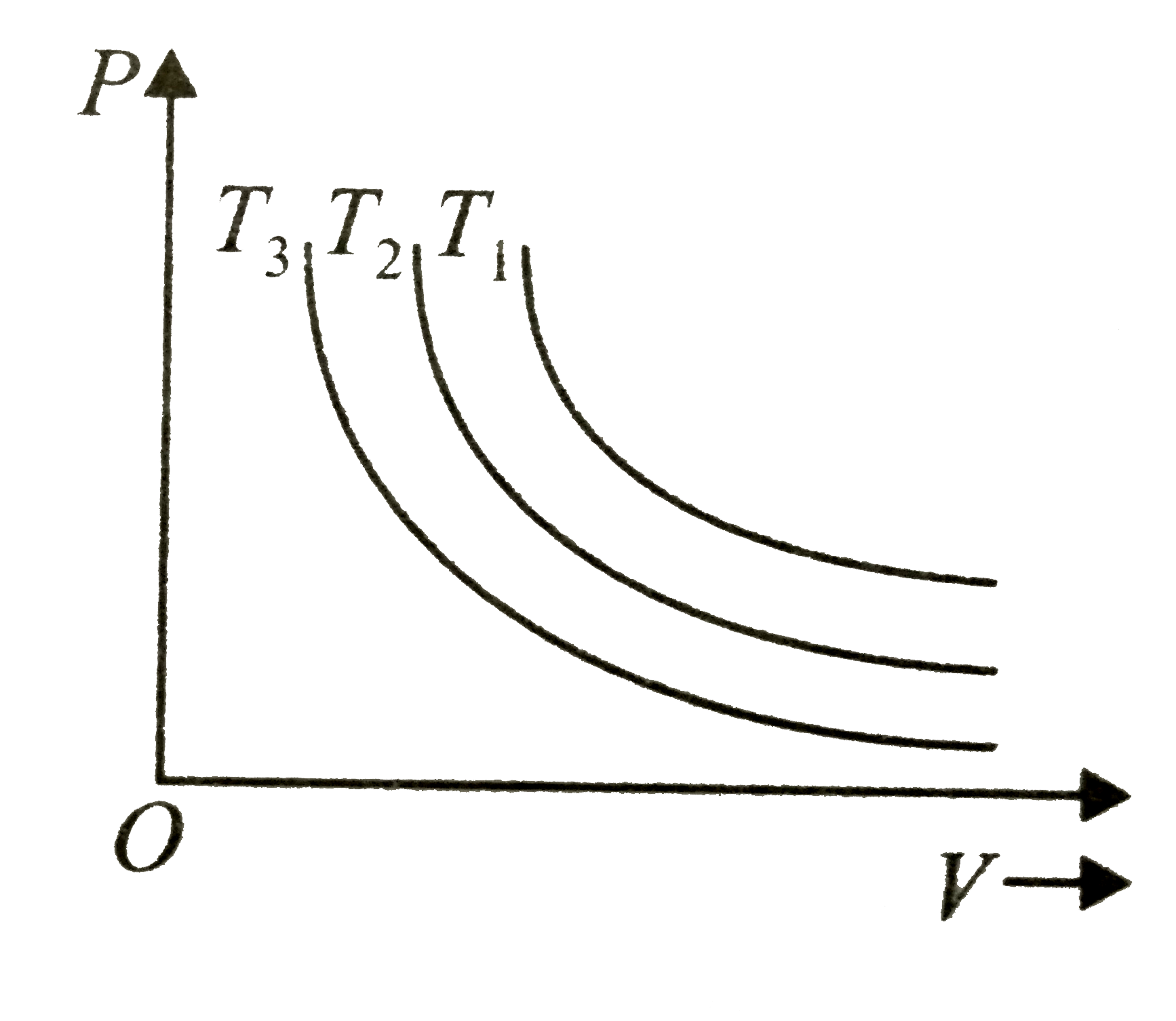 01:52View Solution
01:52View SolutionThe relation between the slope of isothemal curve and slope of adiabatic curve
04:12View SolutionConsider a cycle followed by an engine, (figure)

1 to 2 is isothermal 2 to 3 is adiabatic 3 to 1 is adiabatic
such a process does not exist because03:34View SolutionWhich of the following P-V diagram represent the graph of isometric process?
02:25View SolutionA gas is expanded form volume `V_(0) to 2V_(0)` under three different processes as shown in the figure . Process 1 is isobaric process process 2 is isothermal and and process 3 is adiabatic .
Let `DeltaU_(1),DeltaU_(2) and DeltaU_(3)` be the change in internal energy of the gs in these three processes then
 04:52View Solution
04:52View SolutionTwo identical containers A and B with frictionless pistons contain the same ideal gas at the same temperature and the same velocity V. The mass of the gas in A is `m_A,` and that in B is `m_B`. The gas in each cylinder is now allowed to expand isothermally to the same final volume 2V. The changes in the pressure in A and B are found to be `DeltaP and 1.5 DeltaP` respectively. Then
04:20View SolutionTwo different adiabatic parts for the same gas intersect two isothermals at `T_(1) "and" T_2` shown in P-V diagram . Then the ratio of `(V_(a))/(V_(b))` will be
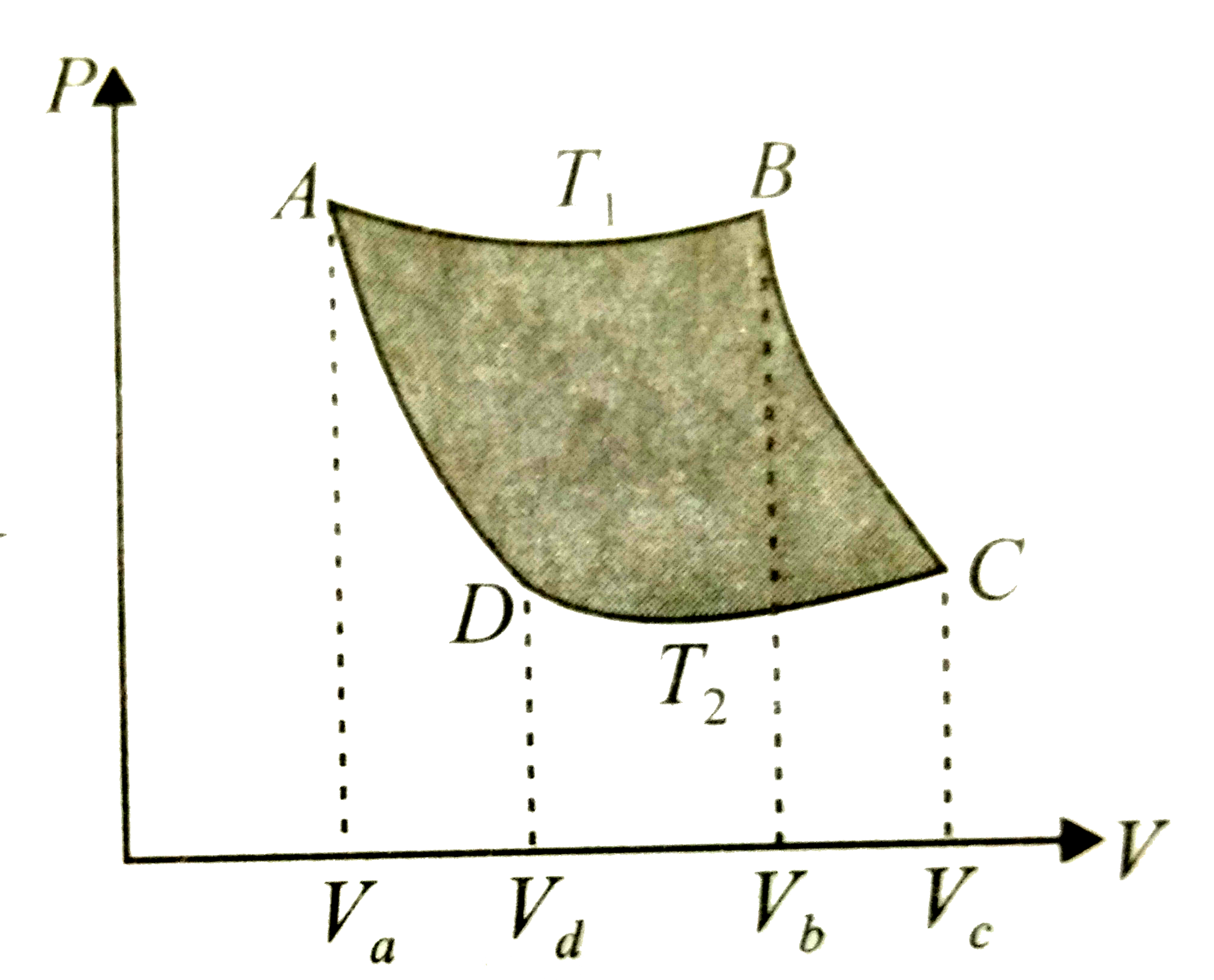 View Solution
View SolutionA heat insulating cylinder with a movable piston contains 5 moles of hydrogen at standard temperature and pressure if the gas is compressed to quarter of its original volume then the pressure of the gas is increased by `(gamma=1.4)`
02:27View SolutionOne mole of an ideal gas goes from an initial state A to final state B via two processs : It first undergoes isothermal expansion from volume `V` to `3 V` and then its volume is reduced from `3 V` to `V` at constant pressure. The correct `P-V` diagram representing the two process in (figure)
01:54View SolutionThe P-V diagram of path followed by one mole of perfect gas in a cylindrical container is hsown in figure, the work done when the gas is taken from state A to state B is
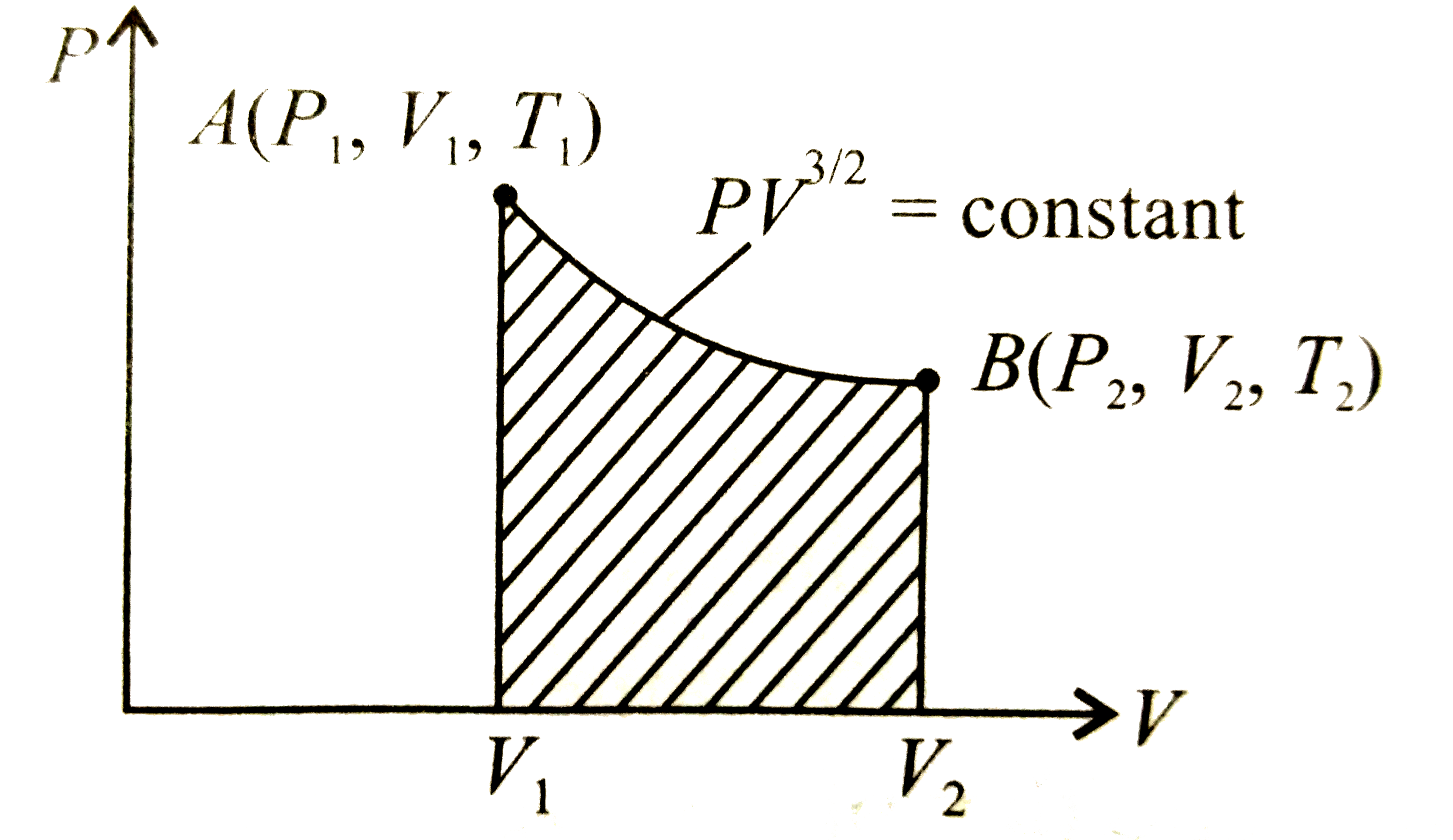 03:24View Solution
03:24View SolutionAn ideal gs at pressure P is adiabatically compressed so that its density becomes n times the initial vlaue The final pressure of the gas will be `(gamma=(C_(P))/(C_(V)))`
02:52View SolutionThe work done in adiabatic process is given by
03:54View SolutionThe cycle in the figure followed by an engine made of an ideal gas in ca cylinder with a piston, the heat exchanged by the engine with the surroundings for adiabatic section AB of cycle is `(C_(V)=(3)/(2)R)`
 02:01View Solution
02:01View SolutionThe initial state of certain gas `(P_(i)V_(i)T_(i))`.It undergoes expansion till its volume becomes `V_(f)` at constant temperature T. The correct plot of P-V diagram for it is
02:33View SolutionAn ideal gas system undergoes an isothermal process, then the work done during the process is
04:09View SolutionPressure P, volume V and temperature T for a certain gas are related by `P=(AT-BT^(2))/(V)`, where A and B are constants .The work done by the gas as its temperature change from `T_(1)` to `T_(2)` while pressure remaining constant is
03:23View SolutionA quantity of a substance in a closed system is made to undergo a reversibel process from an initial volume of `3 m^(3)` and initial pressure `10^(5) N//m^(2)` to a final volume of `5m^(3)`. If the pressure is proportional to the squre of the volume `(i.e,P=AV^(2))`, the work done by the substance will be
04:16View SolutionWhen the state of a gas adiabatically changed from an equilibrium state A to another equilibrium state B an amount of work done on the system is 35 J. If the gas is taken from state A to B via process in which the net heat absorbed by the system is 12 cal, then the net work done by the system is (1 cal = 4.19 J)
01:45View SolutionIf a gas is comprssed adiabatically by doing work of 150 J the change in internal energy of the gas is
01:43View SolutionIn changing the state of a gas adiabatically from an equilibrium state A to another equilibrium state B an amount of work equal to 22.3 J is done on the system.If the gas is taken from state A to B via a process in which the net heat absorbed by the system is 9.35 cal then the net work done by the system in latter case is
(Take 1 case =4.2 J)03:22View SolutionA monatomic gas is compressed adiabatically to `(1)/(4)^(th)` of its original volume , the final pressure of gas in terms of initial pressure P is
02:50View Solution`1 g` mole of an ideal gas at STP is subjected to a reversible adiabatic expansion to double its volume. Find the change in internal energy `( gamma = 1.4)`
03:37View SolutionIf at `60^(@)` and 80 cm of mercury pressure a definite masss of a gas is compressed slowly, then the final pressure of the gas if the final volume is half of the initial volume `(gamma =(3)/(2))` is
01:58View SolutionDuring an isothermal expansion, a confined ideal gas does `-150 J` of work aginst its surroundings. This implies that
02:07View Solution1 mole of an ideal gas in a cylindrical container have the P-V diagram as shown in figure.If `V_(2)=4V_(1)` then the ratio of temperatures `(T_(1))/(T_(2))` will be
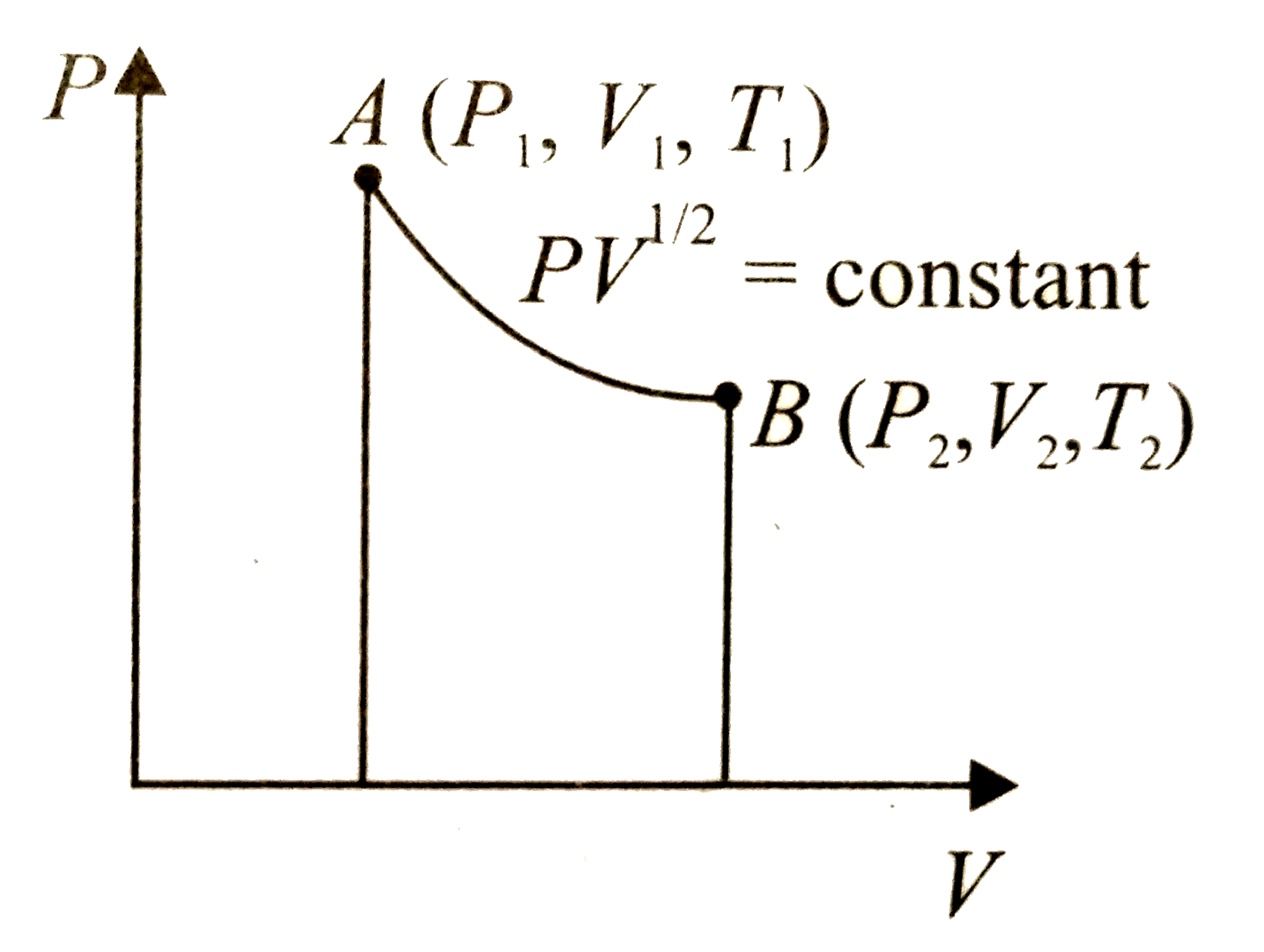 04:22View Solution
04:22View SolutionThree samples of the same gas A,B and C `(gamma=3//2)` have initially equal volume. Now the volume of each sample is doubled. The process is adiabatic for A. Isobaric for B and isothermal for C. If the final pressures are equal for all three samples, find the ratio of their initial pressures
03:05View SolutionTwo moles of an ideal monoatomic gas occupy a volume 2V at temperature 300K, it expands to a volume 4V adiabatically, then the final temperature of gas is
02:23View SolutionThe pressure `P_(1)` and density `d_(1)` of a diatomic gas `(gamma=(7)/(5))` change to `P_(2) and d_(2)` during an adiabatic operation .If `(d_(2))/(d_(1))=32, then (P_(2))/(P_(1))` is
03:53View SolutionThe fall in temperature of helium gas initially at `20^(@)` when it is suddenly expanded to 8 times its original volume is `(gamma=(5)/(3))`
03:38View SolutionA cycle followed an engine (made of one mole of an ideal gas in a cylinder with a piston) is shown in figure The heat exchanged by the engine with the surroundings at constant volume is (Take `C_(V)=(3)/(2)R)`
 05:29View Solution
05:29View SolutionIn the question number 61, the heat exchanged by the engine with the surrounding for path D to A is (at constant pressure)
View SolutionA one mole of an ideal gas expands adiabatically at a constant pressure such that its temperature `Tpropto (1)/(sqrt(V))` .The value of the adiabatic constant gas is
02:38View SolutionA gas is suddenly compressed to `1/4th` of its original volume. Caculate the rise in temperature when original temperature is `27^(@)C. gamma= 1.5`.
01:55View Solution1 mole of gas expands isothermally at `37^(@)C`. The amount of heat is absorbed by it until its volume doubled is `(R= 8.31 J mol^(-1) K^(-1))`
03:34View SolutionThe temperature of n moles of an ideal gas is increased from T to 4T through a process for which pressure `PaT^(-1)` where a is a constant .Then the work done by the gas is
03:51View SolutionA gas expands with temperature according to the relation `V=KT^(2/3)`.Work done when the temperature changes by 60K is.
03:10View Solution50g of oxygen at NTP is compressed adiabatically to a pressure of 5 atmosphere. The work done on the gas, if `gamma =1.4 and R = 8.31 J mol^(-1)K^(-1)` is
05:17View SolutionIn a cyclic process, which of the following statement is correct?
03:37View SolutionWhich one of the following is not possible in a cyclic process?
02:51View SolutionA thermodynamic process is carried out from an original state D to an intermediate state E by the linear process shown in figure. The total work is done by the gas from D to E to F is
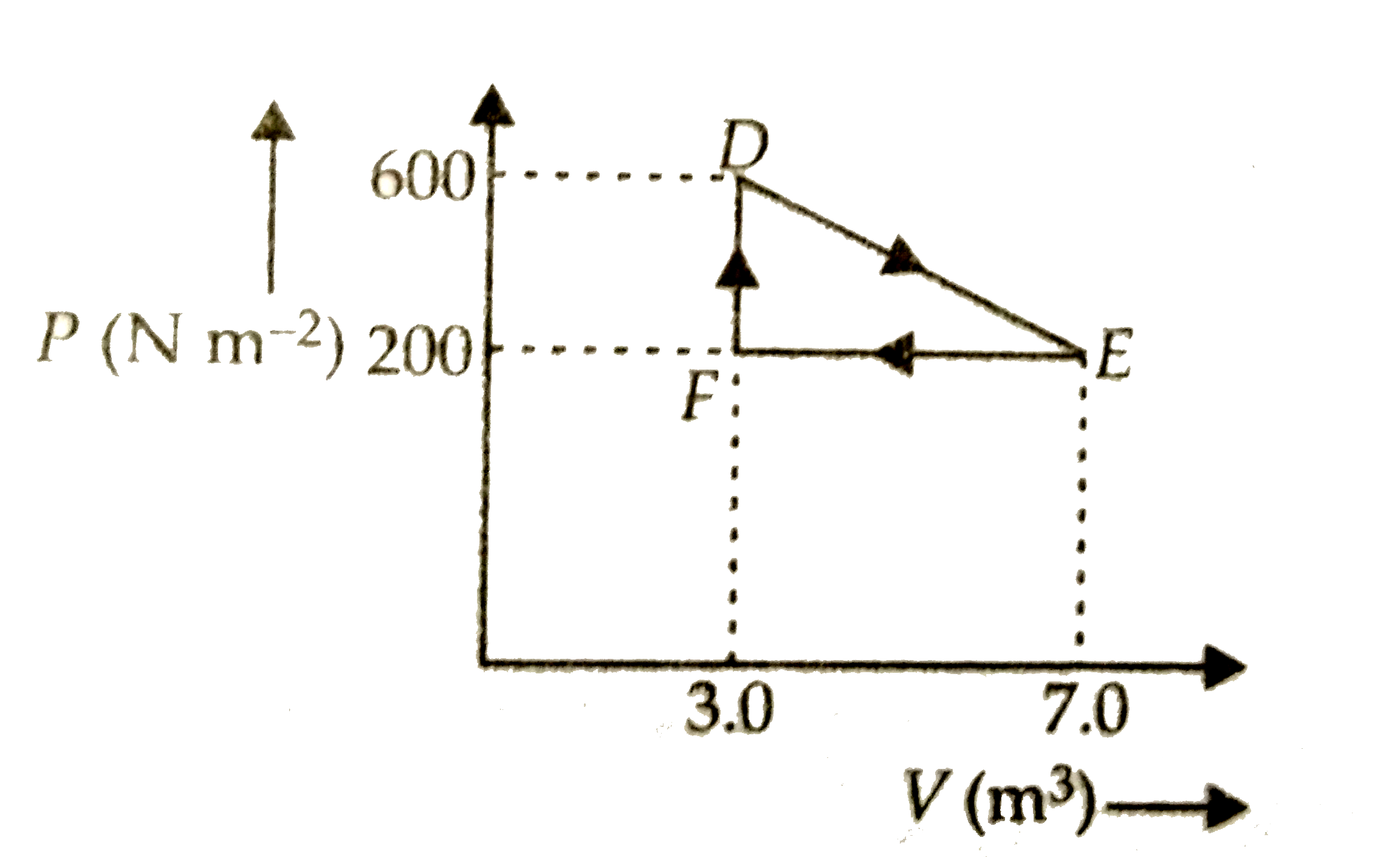 01:53View Solution
01:53View SolutionOne mole of an ideal gas undergoes a cyclic process ABCDA as shown in the P-V diagram, The net work done in the process is
`(1 atm`=`10^(6)` dyne `cm^(-2))` 03:10View Solution
03:10View SolutionThe cycle is shown in figure is made of one mole of perfect gas in a cylinder with a piston . The processes A to B and C to D are isochoric wheras process B to C and D to A are adiabatic, the work done in one cycle is `(V_(A)=V_(B)=V,V_(C)=V_(D) =2V "and " gamma=5//3)`
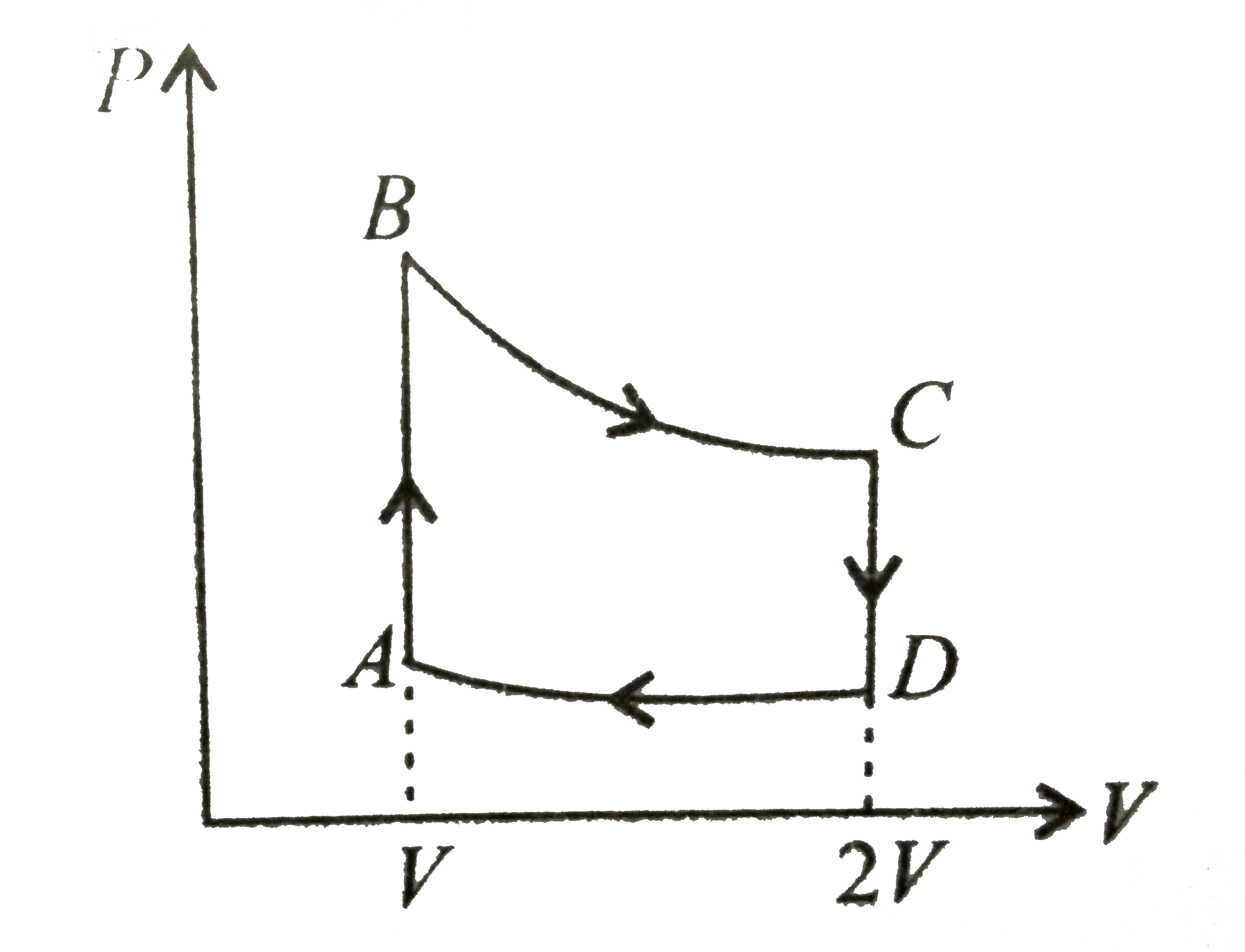 View Solution
View SolutionTwo moles of Helium gas undergo a reversible cyclic process as shown in figure. Assuming gas to be ideal, what is the net work involved in the cyclic process ?
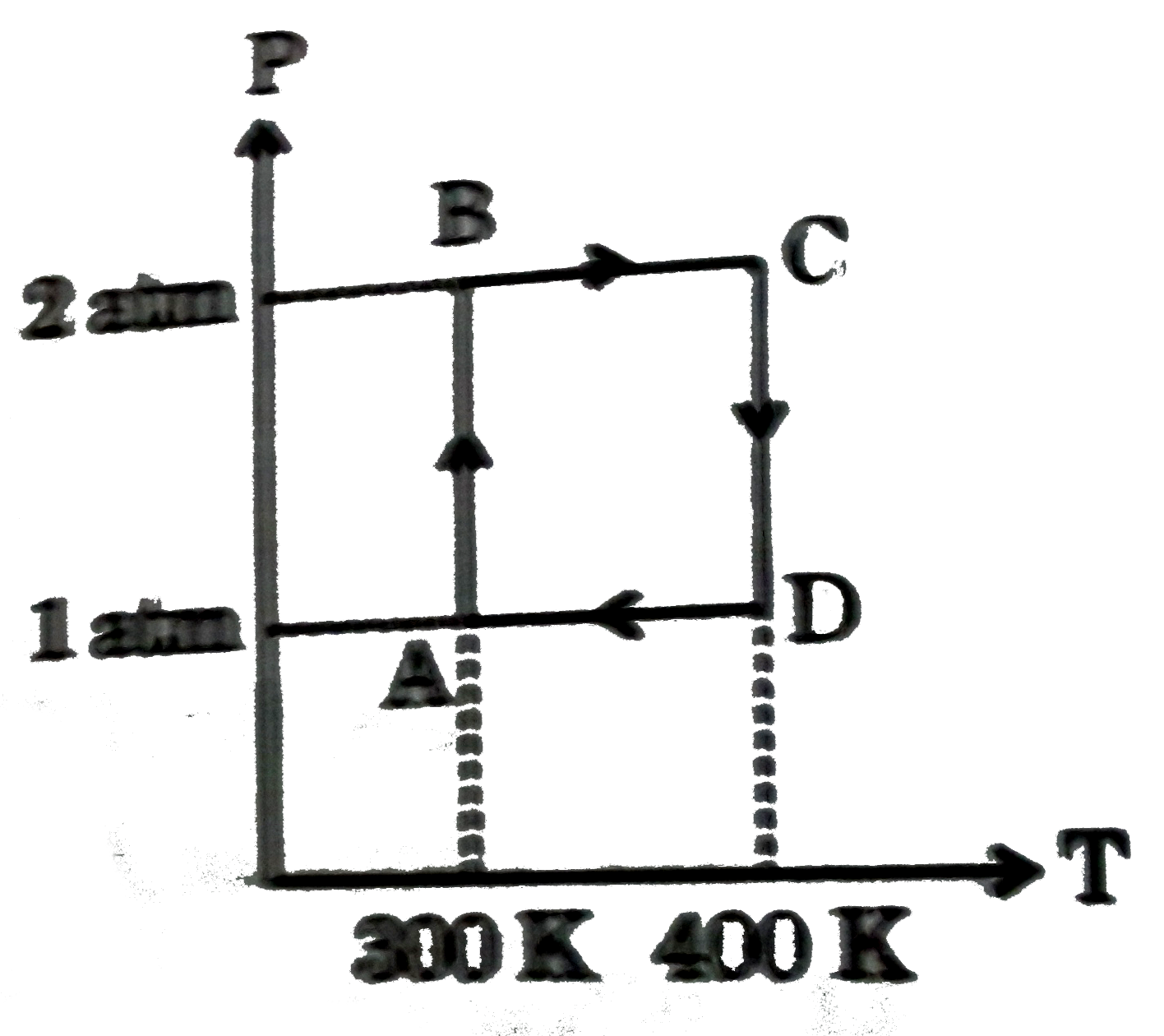 05:21View Solution
05:21View SolutionThe cyclic process for 1 mole of an ideal gas is shown in the V-T diagram. The work done in AB, BC and CA respectively is
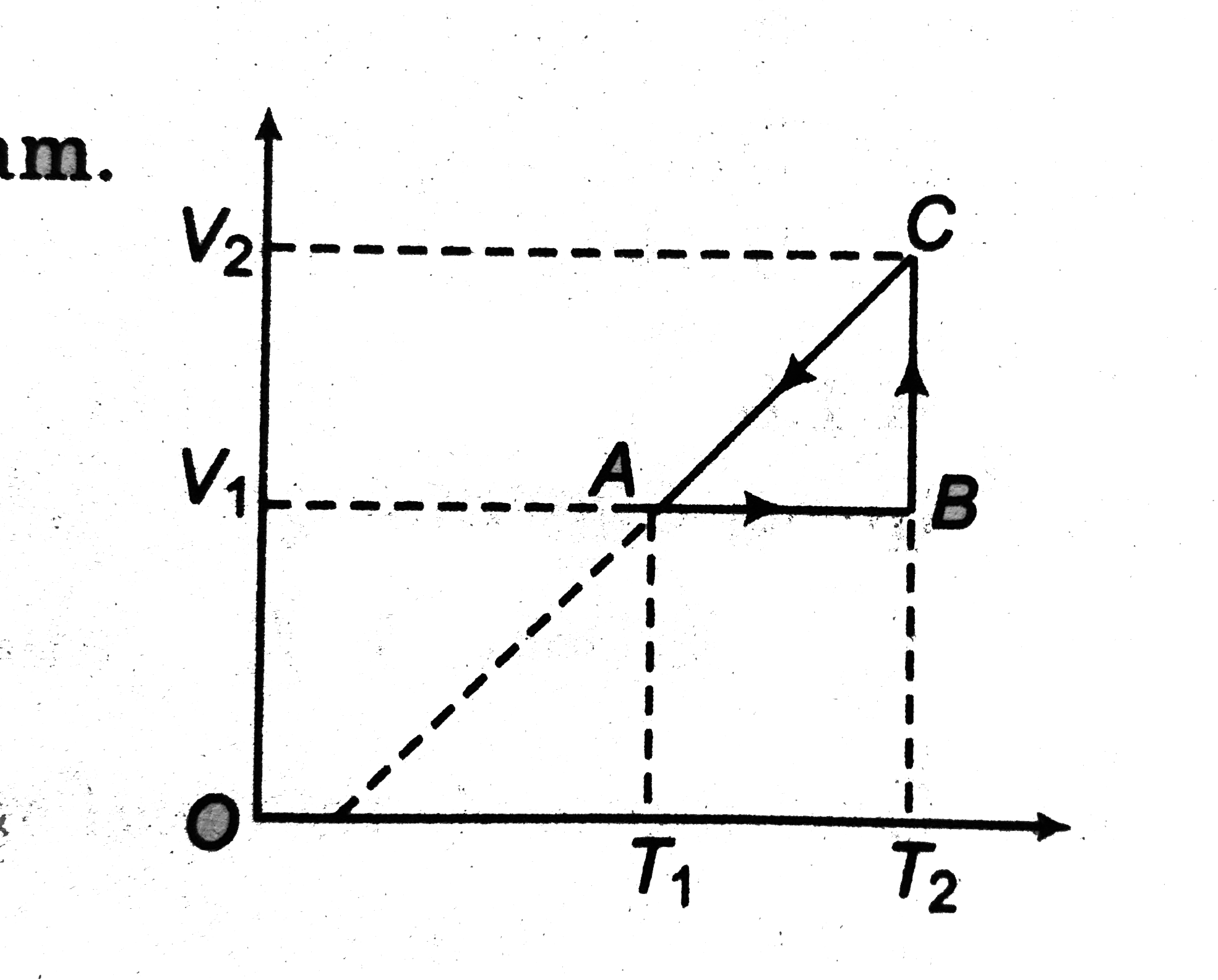 03:59View Solution
03:59View SolutionThe heat absorbed by the system in going through the cyclic process as shown in figure is
 04:58View Solution
04:58View SolutionA thermodynamical system undergoes cyclic process ABCDA as shown in figure work done by the system is
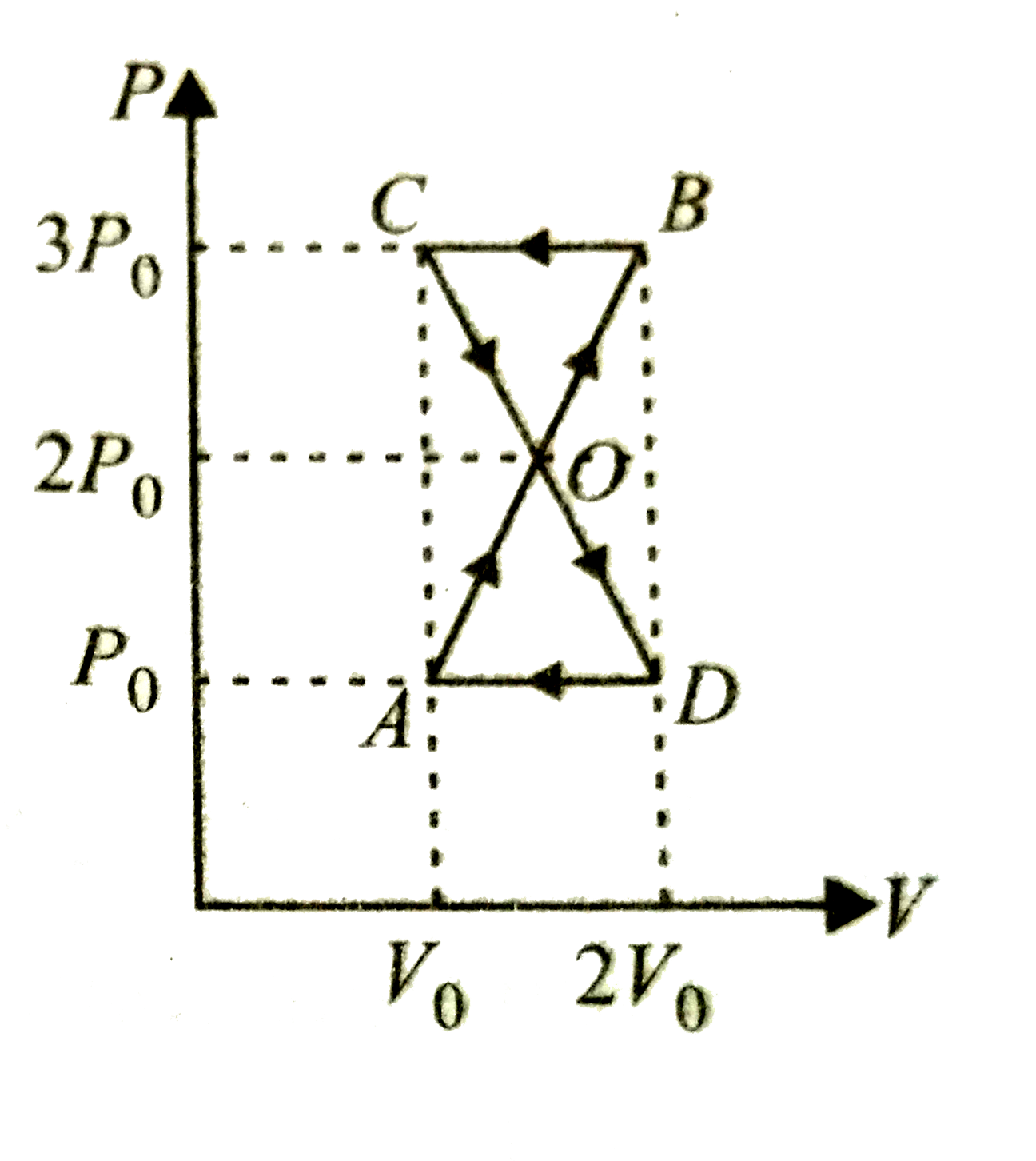 04:22View Solution
04:22View Solution
Thermodynamic Process questions and complete solutions for chapter THERMODYNAMICS of NCERT FINGERTIPS PHYSICS (HINGLISH) of Class 11
